Five things to look out for during week two of the Tour de France 2022
Can anyone take the fight to Tadej Pogačar in the Alps? And when will the sprinters get another chance?
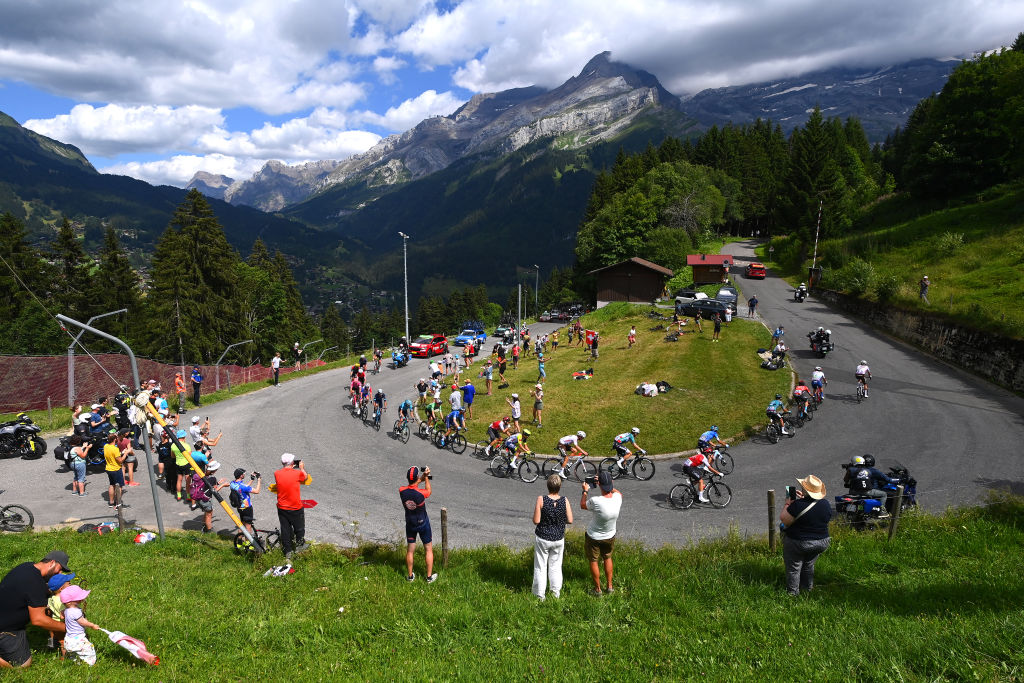
THE HIGH ALPS
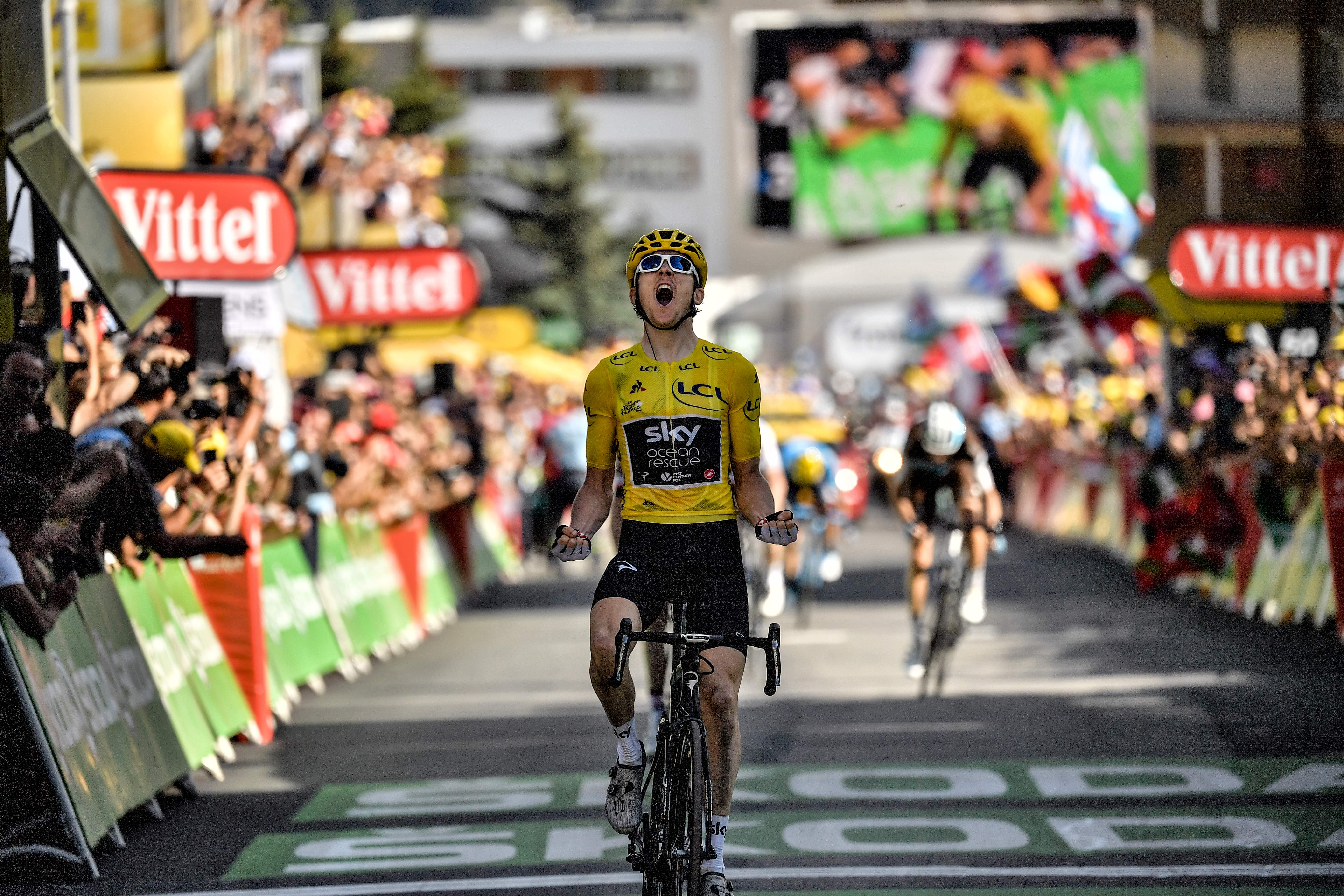
We might think we know which riders are in the running for high general classification finishes following the selections made during the first week, but that could all change once the serious climbing begins this week.
The top ten are still currently separated by little more than two minutes, and these gaps could balloon in the stages to come.
The riders are set to enter the foreboding territory of the High Alps, and it’s here where the real GC candidates are separate from the pretenders. Unlike the punchy stages of the first week, or even the summit finish at La Super Planche des Belles Filles, these stages are proper mountain tests, with long periods of sustained climbing often at very high altitudes
Tuesday’s stage eleven doesn’t pose too different a test than anything already tackled this Tour, ending the long but shallow climb taking the riders to the finish in Megève. It’s the two stages that follow that could define the race for the yellow jersey.
Both feature three climbs ranked category one or higher, and end with a huge mountain top finish — one very familiar, the other virtually unknown. Stage twelve’s is the Col du Grandon, which has only ever appeared once before at the Tour, some three decades ago, before most of the riders apparent at this Tour were even born. It looks like potentially the hardest summit finish of the whole race, especially considering it’s preceded it by the better-known and greatly feared Col du Télégraphe and Col du Galibier.
Then stage thirteen takes them to the most famous Alpe of them all, Alpe d’Huez. Appearing for the 31st time in Tour history, but the first time in four years, it's time for the contemporary crop of modern stars — led of course by Tadej Pogačar — to contribute to its illustrious history.
JUMBO-VISMA SET TO TAKE ON POGACAR
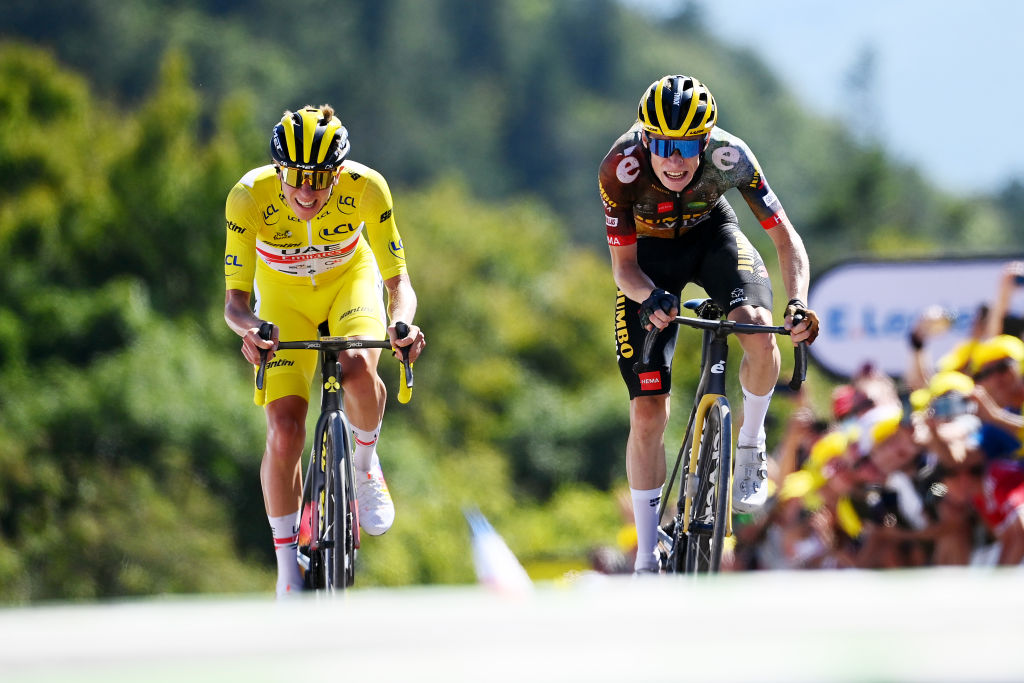
The 2022 Tour de France had been billed as a showdown between the strongest rider in the world, Tadej Pogačar (UAE Team Emirates), and the best team, Jumbo-Visma. And, despite a few snags for the latter, that dynamic remains very much in play as we enter the second week.
Get The Leadout Newsletter
The latest race content, interviews, features, reviews and expert buying guides, direct to your inbox!
Jumbo-Visma did suffer a significant blow on stage five, when a crash saw Primož Roglič ship over two minutes to his fellow Slovenian. But the team are still well-placed for a push for the yellow jersey, courtesy of co-leader Jonas Vingegaard.
Following his breakthrough Tour last year, the Dane has come through his first opening week as a GC leader with flying colours, ending the week second overall just 39 seconds down on Pogačar, having pushed him all the way on the uphills so far.
Based on his form so far this year, plus the way he rode in the final week last year, Vingegaard alone could give Pogačar some problems. Add to that the strength of the team at his disposal, and this could be a very interesting week in the race for yellow.
The role of Roglič will be especially fascinating, and how fit he is following his crash could determine the outcome of the whole race. A fully fit Roglič is a threat to Pogačar even as far as 2-52 down, so much so that he can’t afford to let him attack and get up the road.
Even if the injuries do prevent him from reaching his best form, he could yet have a big role to play as a super-domestique for Vingegaard, for whom having a teammate by his side in the highest mountain top finishes while Pogačar is likely isolated would be a huge advantage.
The two of the Jumbo-Visma attacking Pogačar in tandem, while also being assisted by their army of domestiques led by the incomparable Wout van Aert, was always going to be the best chance for excitement at this Tour de France, and the huge Alpine stages of this week might yet treat us to this spectacle.
HOW WILL INEOS USE THEIR STRENGTH IN NUMBERS?
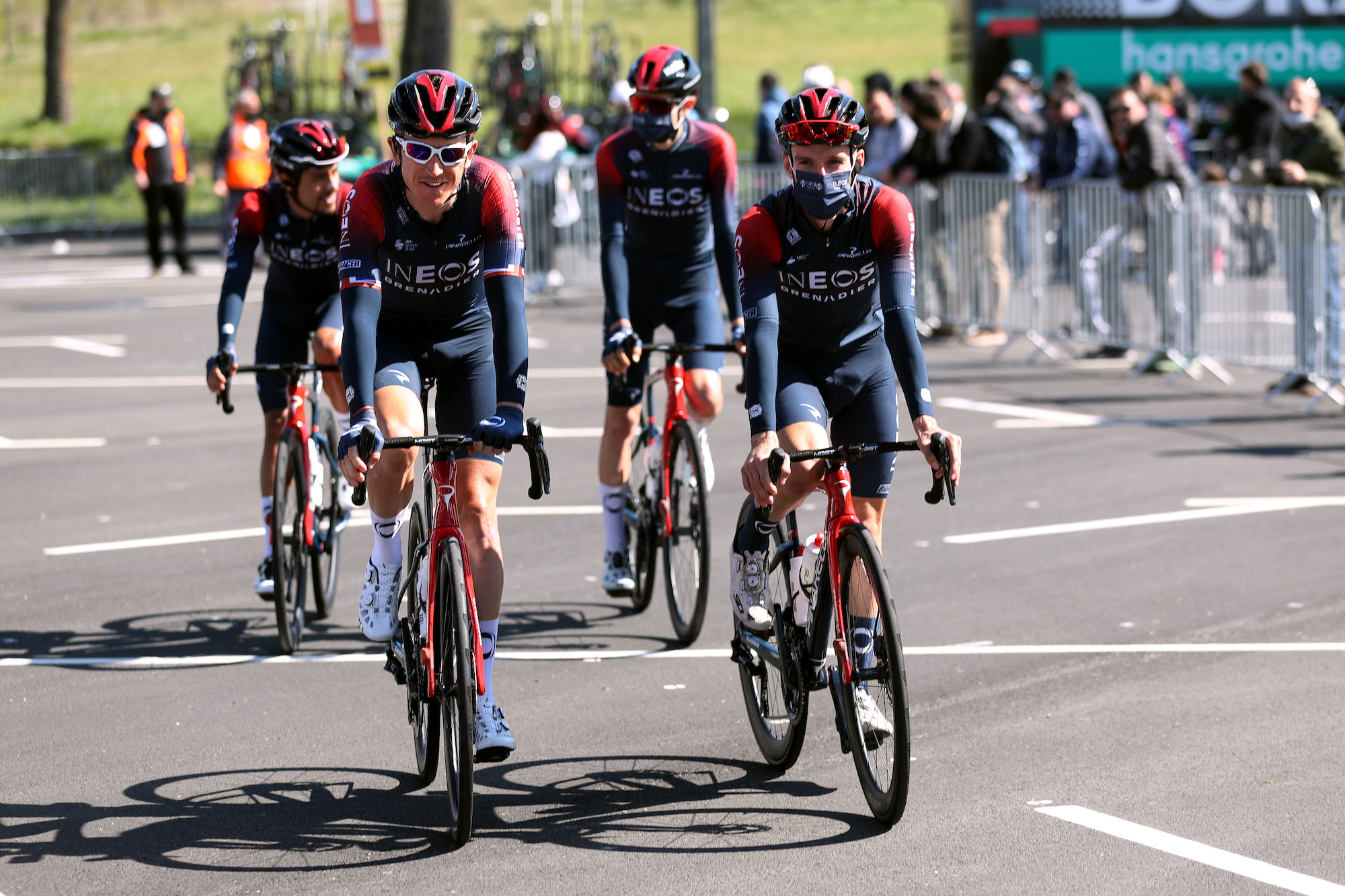
For a team so used to being united around one clear leader, the 2022 Tour de France is shaping up to be an unusual situation for Ineos Grenadiers.
Following a steady first week, they currently have Geraint Thomas placed third at 1-17, Adam Yates in fourth at 1-25, and Tom Pidcock seventh at 1-46.
The team have of course had multiple riders high up the rankings in previous Tour, such as in 2012 with Bradley Wiggins and Chris Froome, and Froome and Thomas in 2018. But in all of those cases, they were in a defensive position defending the yellow jersey, rather than needing to attack and make up ground.
So how ambitious are the team willing to be this week? Is a podium finish or two acceptable for a team that has won seven of the last ten Tours, or will they use their strength to commit to the riskier strategy of trying to win yellow?
Thomas offered some cautious hints that he and the team will seek to gain time. Though the Welshman did say he’d be “proud to make the podium again,” he also said he wanted to have “no regrets.” He noted how Pogačar had been “rattled” at the Tour of Flanders earlier this year, and spoke about how the searing temperatures expected next week could be another factor.
As a former Tour winner Thomas has the experience and proven track record to be the team’s main man. But with Yates being a quality climber who has long since appeared to have the talent to push for overall victory at a Grand Tour, and Pidcock a wildcard talent who could be capable of just about anything, any one of their trio could animate the GC race in the Alps this week.
POSSIBLE CHANCES FOR THE SPRINTERS

Bad news for the sprinters left frustrated by the lack of opportunities so far — the second week presents even less favourable terrain for them.
In total there are two days that could feasibly end in a bunch finish, but both are a lot more complicated than the pair of flat Danish stages at the start of last week. Stage 13 to Saint-Étienne features three official climbs in total, including once ranked a category two, with a lengthy false flat that takes them most of the way to the finish; and the terrain of stage 15 to Carcassonne is constantly undulating, even if there are only two categorised climbs.
This kind of terrain looks ideal for breakaways, especially as the race will be hard to control amid the Alpine stages that precede them. For these to end in bunch sprints, strong and committed chases by the sprinters’ teams will be required.
Even if the break is brought back and late attacks controlled, it will be a struggle for some of the top sprinters not to get dropped. The two winner of the previous sprints, Fabio Jakobsen (QuickStep-AlphaVinyl) and Dylan Groenewegen (BikeExchange-Jayco) are both at risk in this respect, especially if the teams of the better all-round sprinters like Mads Pedersen (Trek-Segafredo), Peter Sagan (TotalEnergies) and, of course, Wout van Aert (Jumbo-Visma), choose to pile the pressure on.
It will take a huge effort for the sprinters to survive the Alps — but, cruelly, it may not be till after the Pyrenees that they get to contest for another stage win.
TIME FOR THE ESCAPE ARTISTS TO COME TO THE FORE
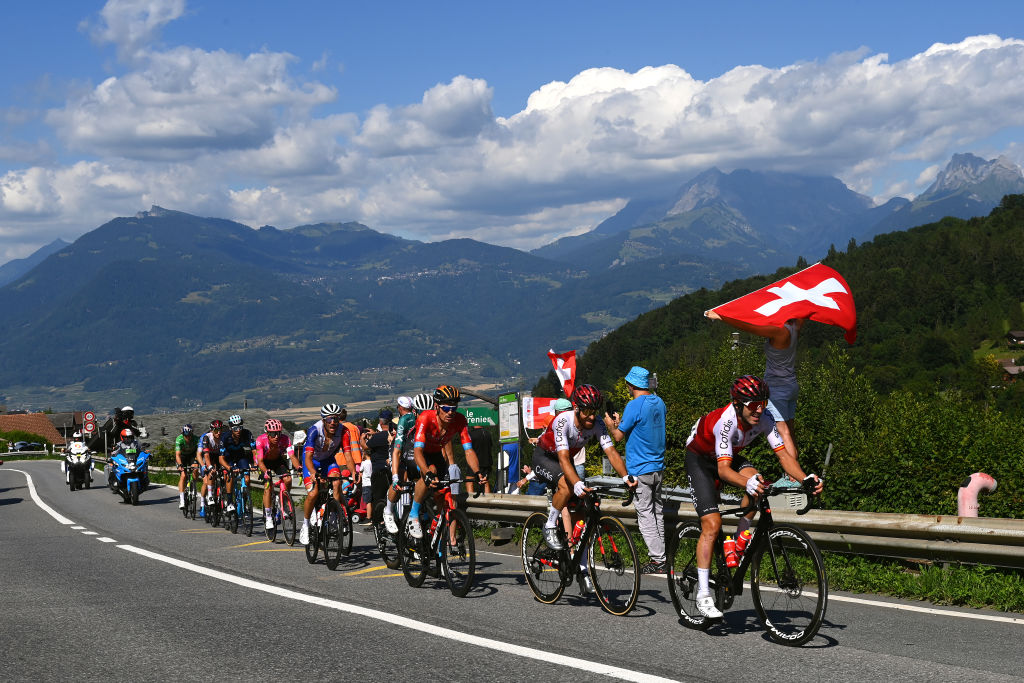
Not much leeway has been given to breakaway riders so far this Tour, with Bob Jungels' win on stage nine being only the second to succeed.
That should change during the second week, as the racing gets harder to control and the specialists sniff out opportunities.
With three Alpine mountain stages in total, it’s time for the climbers who have lost lots of time on GC to come to the fore and go out on the attack. The same men who were active on stage nine are likely to be among the candidates for the break here, such as, to name a few, Pierre Latour (TotalEnergies), Carlos Verona (Movistar) and Patrick Konrad (Bora-Hansgrohe).
Thibaut Pinot (Groupama-FDJ) in particular will be one to watch, especially after coming so close to glory on stage nine. The Frenchman has already bounced back from a failed breakaway to win the next day at the Tour of the Alps this season, and has dedicated his Tour to chasing stages rather than GC.
He may also be a contender for the King of the Mountain classification, which will take shape this week. Simon Geschke (Cofidis) now leads it, so expect him to get into breaks to try and defend the jersey, while the likes of Jungels, Lennard Kämna (Bora-Hansgrohe) might try and do the same having already picked up a few points.
Other climbing specialists set to be let off the leash include Bauke Mollema, Giulio Ciccone (both Trek-Segafredo), Mattia Cattaneo (QuickStep-AlphaVinyl), and, who knows, maybe even Chris Froome (Israel-PremierTech)?
And there is one day, stage 14, that’s suited for punchier riders rather than pure climbers to get into the break, with its familiar finish in Mende (where Steve Cummings memorably won a stage in 2015. This might be the day for riders like Matej Mohorič (Bahrain-Victorious), and, if he can rediscover some kind of form, Mathieu van der Poel (Alpecin-Deceuninck) to awake from their slumber.

Thank you for reading 20 articles this month* Join now for unlimited access
Enjoy your first month for just £1 / $1 / €1
*Read 5 free articles per month without a subscription

Join now for unlimited access
Try first month for just £1 / $1 / €1
Stephen Puddicombe is a freelance journalist for Cycling Weekly, who regularly contributes to our World Tour racing coverage with race reports, news stories, interviews and features. Outside of cycling, he also enjoys writing about film and TV - but you won't find much of that content embedded into his CW articles.
-
 Gear up for your best summer of riding – Balfe's Bikes has up to 54% off Bontrager shoes, helmets, lights and much more
Gear up for your best summer of riding – Balfe's Bikes has up to 54% off Bontrager shoes, helmets, lights and much moreSupported It's not just Bontrager, Balfe's has a huge selection of discounted kit from the best cycling brands including Trek, Specialized, Giant and Castelli all with big reductions
By Paul Brett
-
 7-Eleven returns to the peloton for one day only at Liège-Bastogne-Liège
7-Eleven returns to the peloton for one day only at Liège-Bastogne-LiègeUno-X Mobility to rebrand as 7-Eleven for Sunday's Monument to pay tribute to iconic American team from the 1980s
By Tom Thewlis